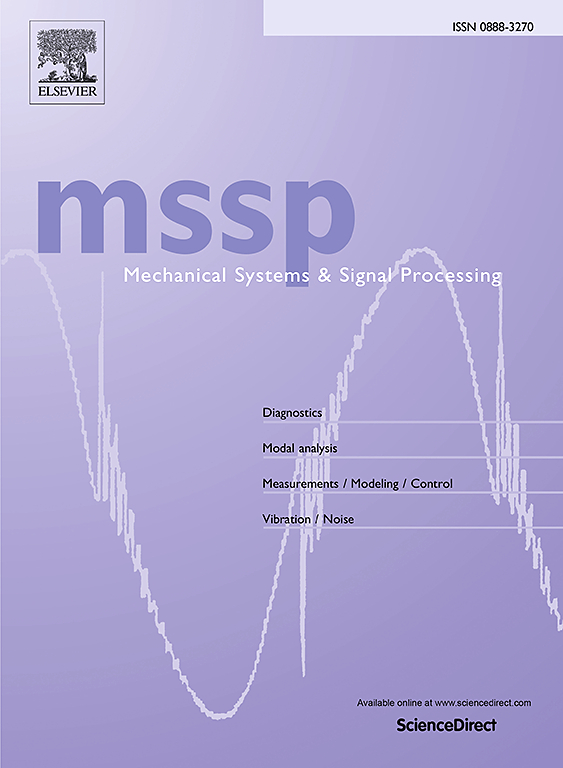新型磁弹簧协同正交压电振动能量收集器
IF 7.9
1区 工程技术
Q1 ENGINEERING, MECHANICAL
引用次数: 0
摘要
本文章由计算机程序翻译,如有差异,请以英文原文为准。
A novel magnet-spring synergistic orthogonal piezoelectric vibration energy harvester
The original orthogonal PVEH composed of a horizontal beam and vertical beam can produce two resonant peaks with large amplitudes. However, an anti-resonance existing between these two peaks significantly reduces the dynamic responses and energy generation. To achieve high-performance piezoelectric vibration energy harvester (PVEH) under broadband vibrations, a novel orthogonal PVEH with magnet-spring synergistic effect (MSSE) is proposed, in which a pair of repulsive magnets is placed at the orthogonal position and four parallel linear springs is fixed at the input terminal of the original orthogonal system. The MSSE brings an additional peak between these two resonant peaks, forming three resonant regions and resulting in a wide bandwidth. It also induces a sudden jump to enhance the response amplitude of the PVEH, achieving high-performance dynamic outputs. A nonlinear electromechanical model was established to describe the response behaviors with different system parameters, such as stiffness ratio (), mass ratio () and magnetic distance (). Simulations and experiments indicate that when the system parameters are and mm, the new PVEH can generate three resonant zones and offer effective bandwidth of 8 Hz, achieving the maximum power of 19.2 µW, 25.8 µW and 62.7 µW, respectively in the three resonant zones. Compared to the original orthogonal PVEH, the effective bandwidth has increased by 110.6 %, and the maximum power at the anti-resonant point has increased 780 times. Field application demonstrates that the proposed orthogonal PVEH can meet the power supply requirement of low-powered electronic device.
求助全文
通过发布文献求助,成功后即可免费获取论文全文。
去求助
来源期刊

Mechanical Systems and Signal Processing
工程技术-工程:机械
CiteScore
14.80
自引率
13.10%
发文量
1183
审稿时长
5.4 months
期刊介绍:
Journal Name: Mechanical Systems and Signal Processing (MSSP)
Interdisciplinary Focus:
Mechanical, Aerospace, and Civil Engineering
Purpose:Reporting scientific advancements of the highest quality
Arising from new techniques in sensing, instrumentation, signal processing, modelling, and control of dynamic systems
 求助内容:
求助内容: 应助结果提醒方式:
应助结果提醒方式:


